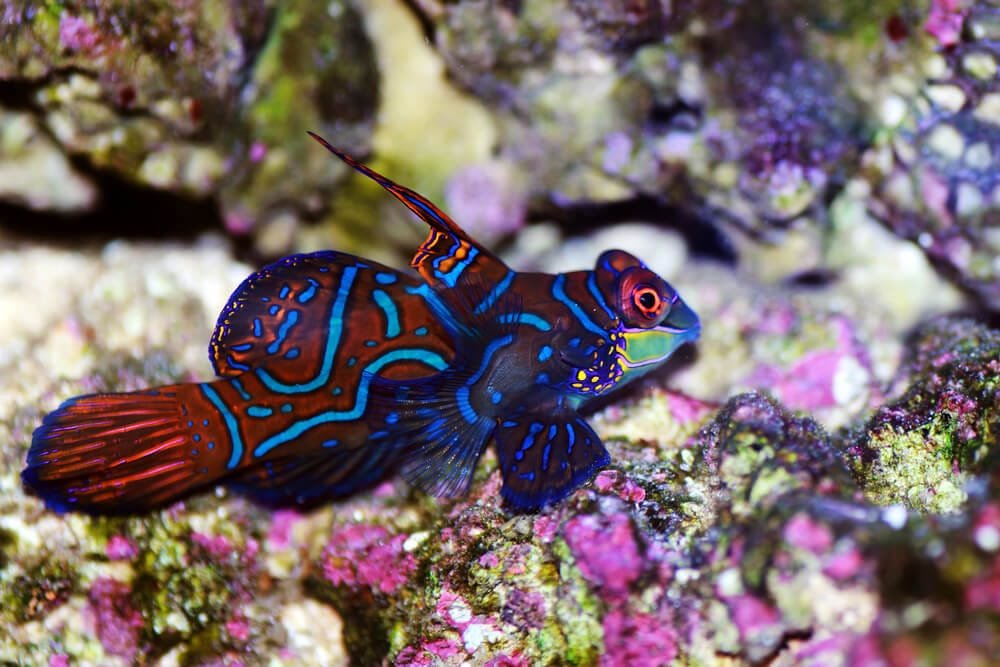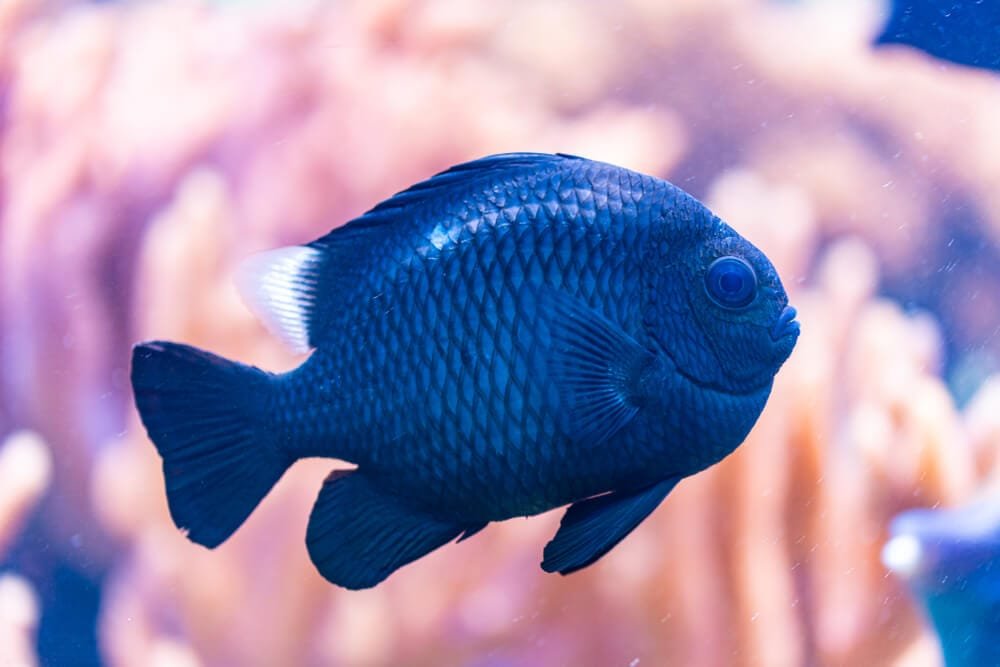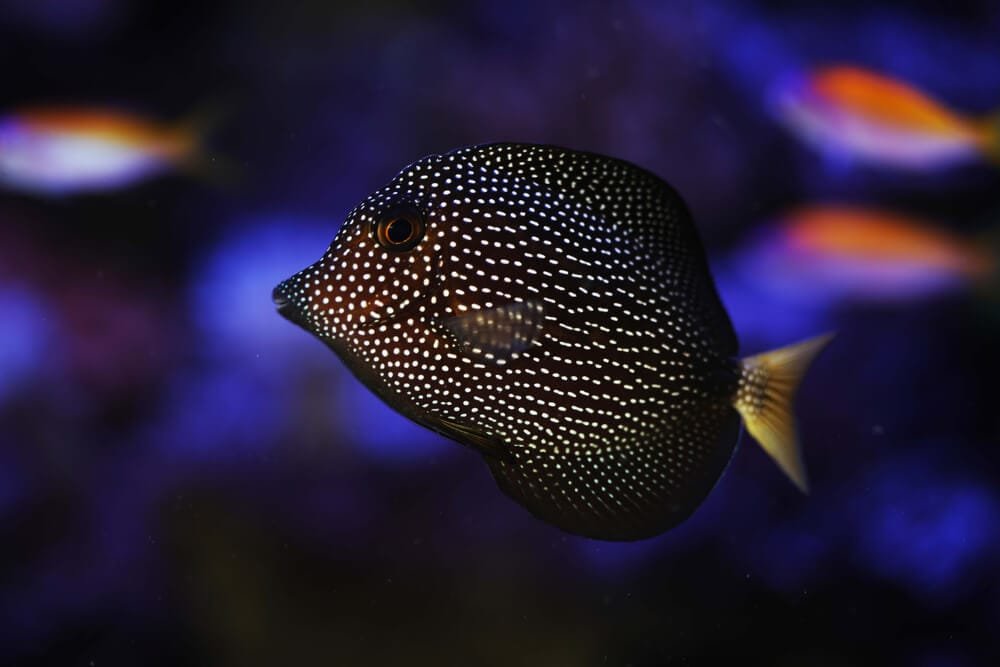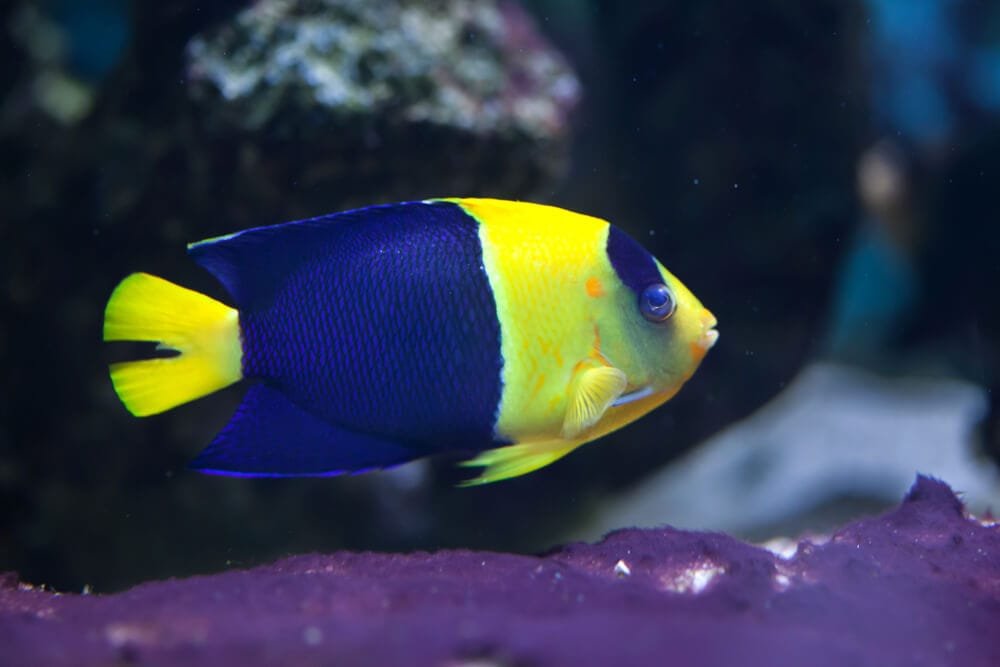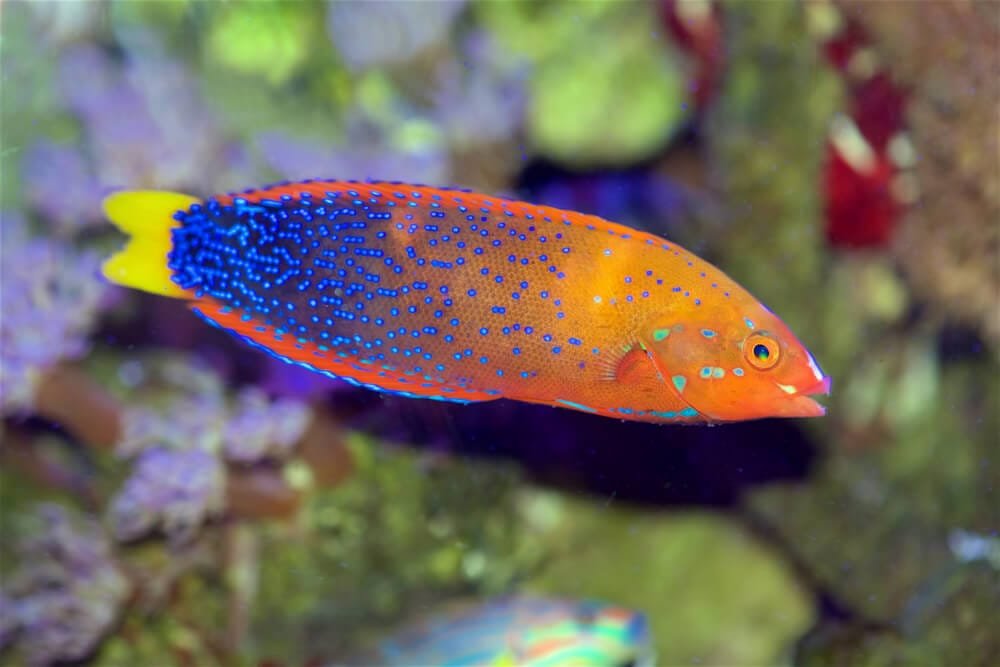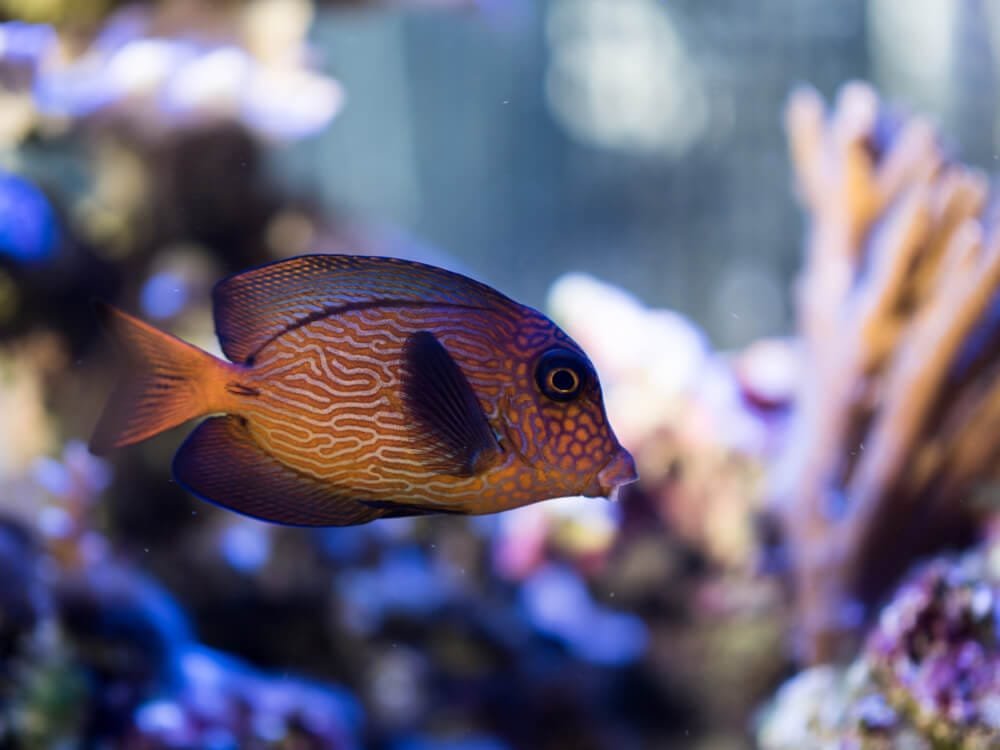Blue Green Chromis: Care Guide and Ideal Tank Conditions
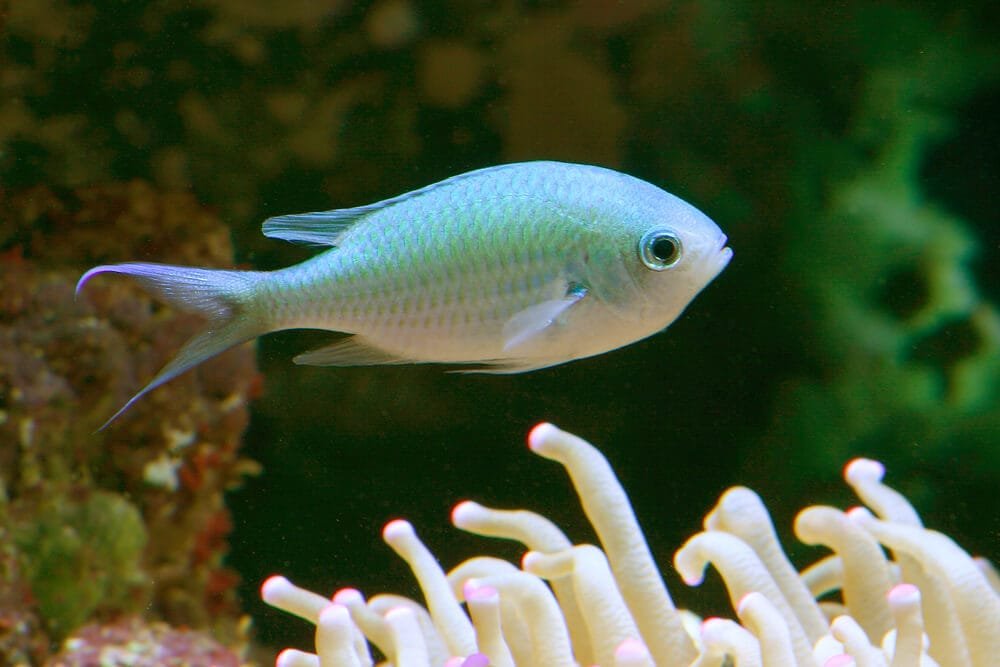
Imagine diving into a vibrant underwater world, where schools of fish glide gracefully through the crystal-clear turquoise water. Among them, you spot a stunning creature known as the Blue Green Chromis. Its iridescent scales shimmer with hues of blue and green, creating a mesmerizing display. This captivating fish, scientifically known as Chromis viridis, is a true gem of the ocean. In this article, we will explore the fascinating world of the Blue Green Chromis, from its physical characteristics to its behavior and habitat. Get ready to be amazed by the beauty and charm of this enchanting marine species.
Physical Characteristics
Coloration
The Blue Green Chromis, as its name suggests, is known for its vibrant blue and green coloration. Its body is predominantly a shimmering blue hue with hints of green, particularly on its back and sides. The color intensity can vary depending on the fish’s mood and environmental factors. The contrast between the vibrant blue and the subtle green creates a visually striking appearance that is sure to catch the eye of any aquarium enthusiast.
Size and Shape
Growing up to three inches in length, the Blue Green Chromis boasts a compact and streamlined body shape. Its elongated, oval-shaped physique is perfectly adapted for swift and agile movements through the water. This slender silhouette, coupled with its vibrant coloration, adds to the overall aesthetic appeal of this beautiful fish.
Fin Structure
The Blue Green Chromis features two primary fins: the dorsal fin and the caudal (tail) fin. The dorsal fin is positioned on the back of the fish and runs along its entire length, providing stability and maneuverability. The caudal fin, on the other hand, is deeply forked, allowing the Blue Green Chromis to swiftly change direction and navigate its surroundings with ease.
Behavior
Known for their peaceful and sociable nature, Blue Green Chromis are highly active swimmers. They prefer to live in large groups, known as schools, and form tight-knit communities within the aquarium. This species is known to exhibit schooling behavior, which means they will swim closely together, often mimicking each other’s movements. This behavior not only provides companionship but also serves as a natural defense mechanism against potential predators.
Habitat and Distribution
Natural Habitat
The Blue Green Chromis is native to the warm tropical waters of the Indo-Pacific region. It can be found in coral reefs, lagoons, and other shallow, coastal areas. These fish are often associated with the vibrant and diverse ecosystems of coral reefs, where they seek shelter among the coral branches and rocks.
Geographical Distribution
The Blue Green Chromis has a wide geographical distribution and can be found in various regions throughout the Indo-Pacific. Its range extends from the Red Sea and the east coast of Africa to the Pacific Ocean, including locations such as the Maldives, Indonesia, and the Great Barrier Reef.
Preferred Water Conditions
To thrive in an aquarium environment, the Blue Green Chromis requires specific water conditions that closely resemble its natural habitat. It thrives in water temperatures ranging from 74 to 82 degrees Fahrenheit and prefers a pH level between 8.1 and 8.4. Proper filtration and regular water changes are essential to maintain optimal water quality, as these fish are sensitive to changes in water chemistry.
Feeding Habits
Diet
Blue Green Chromis are omnivorous, meaning they consume both plant matter and small invertebrates. In their natural habitat, they primarily feed on plankton, algae, and small crustaceans. In an aquarium setting, a varied diet can be provided, consisting of high-quality flake or pellet food, supplemented with frozen or live foods such as brine shrimp and mysis shrimp. Offering a diverse diet ensures that the Blue Green Chromis receive all the necessary nutrients for their overall health and vitality.
Feeding Behavior
These fish are active feeders and tend to spend a significant portion of their day actively searching for food. They will eagerly swim out from their hiding places to forage and graze on the surfaces of rocks and coral. Their quick and efficient feeding behavior reflects their energetic nature, making them a fascinating species to observe in the aquarium.
Feeding Techniques
Blue Green Chromis employ various feeding techniques to capture prey. They often utilize a method called “picking,” where they carefully nibble at small bits of food with their small mouths. Additionally, they may also engage in “gulping,” where they swiftly inhale larger prey items. This combination of feeding techniques allows them to feed efficiently and adapt to different food sources in their environment.
Reproduction
Breeding Process
The breeding process of Blue Green Chromis is an interesting and complex endeavor. During courtship, males display vibrant colors and engage in intricate swimming patterns to attract a female partner. Once a pair has formed, they will embark on their spawning ritual.
Spawning Behavior
Blue Green Chromis are known to be synchronous spawners, meaning that multiple pairs will release their eggs and sperm simultaneously. This behavior ensures a higher chance of successful fertilization and increases the survival rate of the offspring. The eggs are released into the water column, where they are left to develop and hatch on their own.
Parental Care
Although the Blue Green Chromis do not exhibit direct parental care, the presence of a school provides a level of communal protection for the eggs and newly hatched fry. The adults within the school will defend the general spawning area and keep a watchful eye on the developing eggs. This collective guardianship helps to ensure the survival of the young until they are able to fend for themselves.
Aquarium Care
Tank Size
When considering the appropriate tank size for Blue Green Chromis, it is essential to take into account their schooling behavior. These fish thrive in the company of others, so a minimum tank size of 30 gallons is recommended to accommodate a small group. Providing enough space allows them to swim freely and establish a comfortable hierarchy within the school.
Water Quality
Maintaining high water quality is crucial for the health and well-being of Blue Green Chromis. Regular water testing should be conducted to monitor parameters such as ammonia, nitrite, nitrate, and pH levels. Additionally, the use of a quality protein skimmer and an efficient filtration system will help maintain excellent water quality by removing excess organic waste and pollutants.
Temperature and Lighting
The ideal water temperature for Blue Green Chromis ranges between 74 and 82 degrees Fahrenheit (23-28 degrees Celsius). It is important to keep the water within this range to mimic their natural habitat and promote their overall health. Adequate lighting is also essential, as it helps support the growth of beneficial algae and creates a visually appealing environment for the fish.
Tank Mates
Due to their peaceful temperament, Blue Green Chromis can coexist with a wide range of tank mates. However, it is important to avoid aggressive species or those that may outcompete the Blue Green Chromis for food. Suitable tank mates include other peaceful reef fish, such as clownfish, gobies, and wrasses. It is crucial to research potential tank mates to ensure compatibility and minimize any potential conflicts.
Feeding in Captivity
In captivity, Blue Green Chromis readily accept a varied diet. Providing a mix of high-quality flake or pellet food, supplemented with frozen or live foods, will ensure they receive all the necessary nutrients. It is advisable to offer small, frequent feedings throughout the day to mimic their natural feeding behavior.
Aquarium Behavior
Schooling Behavior
One of the most captivating aspects of Blue Green Chromis is their schooling behavior. These fish have a strong instinct to swim closely together in a coordinated manner. The sight of a school of Blue Green Chromis moving as one is mesmerizing. This behavior not only provides a sense of security but also creates a visually stunning display within the aquarium.
Territorial Behavior
Blue Green Chromis are not highly territorial. They generally coexist peacefully within their school and with other tank mates. However, in some cases, dominant individuals may establish temporary territories within the aquarium. These territories are usually small and centered around a specific hiding spot or area of interest. As long as ample hiding places are provided, such territorial behavior should not cause any significant issues.
Interspecies Relationships
Blue Green Chromis are generally compatible with a wide range of reef fishes. They often form symbiotic relationships with other species, such as cleaner shrimp and cleaner fish. These cleaning symbioses involve the Blue Green Chromis visiting cleaning stations where they allow the cleaner organisms to remove parasites and dead skin from their bodies. These interactions benefit both parties involved and contribute to the overall health of the aquarium ecosystem.
Common Health Issues
Parasitic Infections
Like any aquarium fish, Blue Green Chromis are susceptible to parasitic infections. Common parasites that may afflict them include marine ich (Cryptocaryon irritans) and velvet disease (Amyloodinium ocellatum). Regular observation and quarantine procedures for new additions to the aquarium can help minimize the risk of introducing parasites. If an infection occurs, prompt treatment with an appropriate medication under the guidance of a veterinarian or aquatic specialist is necessary.
Bacterial Infections
Bacterial infections can also affect Blue Green Chromis, especially when water quality is poor or stress levels are high. Symptoms may include lethargy, loss of appetite, and visible signs of skin discoloration or ulcers. Maintaining optimal water parameters and a stress-free environment, along with prompt treatment using antibiotic medications, can help prevent bacterial infections and promote the recovery of affected individuals.
Protozoan Infections
Protozoan infections, such as Brooklynella and Trichodina, can pose a threat to the health of Blue Green Chromis. These infections often manifest as abnormal swimming behavior, external sores, excessive mucus production, or difficulty breathing. Quarantining new arrivals and regular observation of the fish can help detect and treat protozoan infections early on. Medications specifically designed to target protozoan parasites should be used in consultation with a professional.
Conservation Status
Threats
The Blue Green Chromis is not currently designated as a threatened or endangered species. However, it faces various threats in its natural habitat, mainly due to human activities. Overfishing, destructive fishing practices, pollution, and the destruction of coral reefs all pose potential risks to the long-term survival of this species. The degradation of their natural habitat can disrupt their interconnected ecosystems and impact their ability to thrive.
Conservation Efforts
Numerous organizations and institutions are actively working towards the conservation of coral reefs and the species that inhabit them, including the Blue Green Chromis. Efforts are focused on promoting sustainable fishing practices, establishing marine protected areas, and raising awareness about the importance of conserving these delicate ecosystems. Additionally, research and monitoring projects are carried out to gather data and further understand the biology and ecology of the Blue Green Chromis.
Protection Status
The Blue Green Chromis is not currently listed under any specific protection status. However, the conservation efforts mentioned above contribute to the overall protection and preservation of this species. It is important for individuals and the aquarium trade to act responsibly and ensure that Blue Green Chromis are sourced from sustainable and ethical sources.
Interesting Facts
Symbiotic Relationships
Blue Green Chromis form symbiotic relationships with cleaner organisms, such as cleaner shrimp and cleaner fish, to maintain their hygiene and health. These cleaning interactions benefit both parties involved and create fascinating behavior to observe in the aquarium.
Ability to Change Color
Blue Green Chromis have the remarkable ability to change their color intensity, depending on their mood and environmental conditions. It is not uncommon to witness variations in their vibrant blue and green hues, adding an element of intrigue to their already captivating appearance.
Schooling Patterns
The schooling behavior of Blue Green Chromis is not only visually captivating but also serves as a crucial defense mechanism. By swimming closely together and mimicking each other’s movements, these fish confuse potential predators and create the illusion of a larger and more intimidating presence.
Conclusion
The Blue Green Chromis is a remarkably beautiful and sociable fish that adds a vibrant pop of color to any aquarium. Its peaceful nature, schooling behavior, and compatibility with other reef fish make it a delightful addition to a community tank. Providing proper care, maintaining optimal water conditions, and offering a varied diet will ensure the health and longevity of this stunning species. Through responsible aquarist practices and conservation efforts, we can help protect and preserve the Blue Green Chromis and the fragile ecosystems they inhabit.
